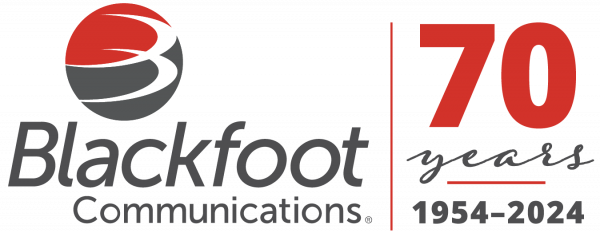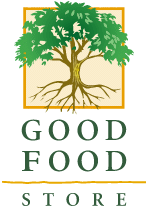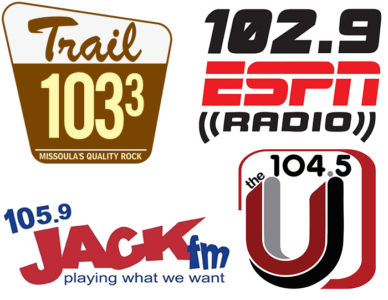“The Filipino... Cowboy?”
Louis Woodrow Vero born 1939 in Sacramento, California. He cowboyed after college in Idaho and Oregon and ended up on a dude ranch in Greenough, Montana, where he married the boss’s daughter and– to paraphrase Winston Churchill– he lived happily ever after.
Our cowboy hero gives us the background to understand how he came to acquire the skill to allow him to perform emergency surgery on a cow with a prolapsed vagina out in the field.
This episode of Tell Us Something was recorded in front of a live audience on March 29th, 2016, at The Wilma in Missoula, MT. 9 storytellers shared their story based on the theme “Why Didn’t Anyone Tell Me?”.
Today’s podcast comes to us from Louie Vero and is titled “The Filipino… Cowboy?”. Thank you for listening.
Transcript : The Filipino... Cowboy?
I’ll start here in just a little bit.
My parents, came from the Philippine islands, and immigrated into the California coast, where I was born, as Marc said, in 1939, but he didn’t say, that I was born on the 4th of July. I don’t know how they planned it but that’s what had, how it happened.
My parents had a total of five children, and I was the last one. And, after I was born, my parents divorced. And I always thought, and I never did ask, was it because of me?
I did grow up in California and I’d like to jump forward after telling you that my mother nicknamed me “Cowboy”, because of the Filipinos folks’ penchant for the Western heroes of the day. And surprisingly, they had a lot of friends who felt the same way. So she nicknamed me Cowboy. And you know how people are that way, they give you a name I hope you live up to it?
So I don’t I don’t know if I did anything with it then, but let’s jump forward to when I went off to college at Cal Poly, San Luis Obispo, California.
And the school is is well known for its Agriculture Department and its Engineering Department and its National Champion Rodeo teams. Anyway, I was enrolled in the animal husbandry department where we learned about swine, sheep and beef cattle, dairy cattle. And horses.
In my sophomore year, I enrolled in the colt starting class where these unbroke horses were donated to the school by folks around the school or raised colts from the University’s herds. And I happened to bring along a three year old buckskin gelding from home, up in Sacramento, whose name was Henry.
And all the students, there were about ten to twelve of us. All of us students got along pretty well, starting the colts in about three days or so. Checking them out, getting them saddled so that we could ride ‘em. Except for this one particular young mare, who, after you saddled her, would go over backwards and land on her saddle.
But the young man who had him, Bill Boyd, who had the horse, Bill Boyd, was very good at avoiding being squashed. And after, it was about the eighth week of the class, she was coming along pretty well. And had stopped flipping over, so that the whole bunch of us were able to ride on campus, anywhere through the units. And we had some cow pastures up above the campus, up in the hills and canyons. And that was great.
There are two instances I’d like to tell you about that characterize what I can remember about the class.
The first is, we had Poly Royal,oil which is a campus-wide celebration, and it’s billed as a county fair on a college campus. It’s a multi-day affair where it’s an open house for all of the departments. And there was a horse show at the rodeo arena. And I entered up, along with the other members of that class I just took, in the Green Broke colt class. And that was judged on: way of going — either direction — at a walk, trot, and canter, with a stop and backing up.
I am humble enough to say that my horse Henry won that class, and I was excited about that!
The second instance I’d like to talk to you about is, our class, toward the end, all got invited to a calf branding on one of the colleges cattle herds. And it involved, first we’d go up and gather all the cattle out of the hills, Then we’d separate the calves off the mothers. And this particular time we separated the calves into two bunches: one to be done on horses, students on horses, and dragging them to the fire, and the other group were students on foot, who gathered the calves and ran them up the chute. And I am happy to say that we students on the horses were, and the horses were, our colts were super. They really did well, responded well, and I’m here to tell you that we outdid the folks with, ah, being on foot.
I need to tell you that we dragged the calves up, to the branding fire, where students would process ‘em by vaccinating them, marking them, worming them if they need it. So, on from there to my graduation and after.
I went to work for a feedlot in Idaho, on the Snake River, where we had about four thousand calves to take care of and I was the only cowboy there to ride all the pens, find the sick ones, if there were any, and, pull ‘em out. Drive ‘em out of the pen onto this big common alley that we had that led to the doctor pen.
I was lucky to have a pretty good Australian pup with me at that time, and we go in my horse Bob and he was named after a friend of my brother’s who gave him the money to buy the horse and his name was Bob. So I’d be riding Bob, and my my dog, Tis — did I tell you his name, or, where it came from? So, I…. Whenever I’d go to feed him, I’d take his food and dish and say, “Here itis.” [Laughter]. So, I’d set him up at the open gate, to the pen of cattle. And I’d set him in the open gate, and he’d keep the cattle from going out. I’d ride the pen. If I found any sick ones, I’d drive ‘em up, to the gate, And I’d wave him to the side, and he’d get out of the way, and I’d drive the sick animal out into the alley.
We’d ride all the pens and after we rode the pens and gathered the sick cattle, I would drive them down to the doctor pen. And the chute leading up to the squeeze where I’d doctor the cattle, had this space about a foot up from the ground and that was so that the dog could bring them forward by nipping at their heels. And so, as I said, the only cowboy there. So, I’d be at the head catch, I’d have my dog bring, bring ‘em up I’d doctor ‘em, usually for pneumonia or dehydration, and I probably used some antibiotics like, penicillin, and then electrolytes. They I let ‘em out, out the gate. And my dog would be sitting there, and I’d say, “OK, go get another one!”
And I thought he was multi-lingual because he responded, “High!”
I didn’t know that he spoke Japanese!
And he’d go back and bring another one up.
That lasted for about a month. I mean, there was a month of no time off, every day, and my horse and my dog got pretty good at handling cattle.
From there I was hired away to a co-calf operation on the Columbia River, about thirty miles from the Pacific Ocean. And, it was on the banks of the river. Made up of a bunch of small dairy farms, but we had oh, about fifteen hundred mother cows with the lowels on green pasture.
My job was to ride through these pastures and if there was anything sick, treat ‘em.
The one event that maybe I can talk about that maybe summarizes my time there was.
I was riding through this one pasture, and, I think I was on Bob, maybe I was on another horse named Bananas. But anyway, had my dog with me. And I notice this big, maybe she was a cross-bred cow. Obviously pregnant. And she had a prolapse of her uterus sticking out about that far. So, I wasn’t quite sure what to do, but…. I went ahead and followed her for a while and roped her by her two hind feet, so that I could restrain her. And I got her up short with short rope. Dallied around my horse’s I mean, my saddle horn, and tied off. Stepped off, with my doctor bag, which didn’t have very much in it. As I said. But.
I reduced her uterus, about that far back in. And sewed her up with the point of my knife to make holes. And sutured up. And tied her off with a buckskin shoestring that I had.
[Laughter]
So, I mean she took it real well.
[Laughter]
And I was happy that when I did reduce her uterus back in, she kinda peed, and when she stood up, I let her up, and she stood up, she really peed. And that was a good sign.
I had, as I said, about fifteen hundred cows to go through, I was the only cowboy, so…. It was a week and a half before I got back to that cow in her pasture. And, what a feeling. To find that cow. In her pasture. With no apparent ill effects. The buckskin, the string was gone. And she had a healthy bull calf suckin’ on her.
Now, no one ever told me that life would be so fruitful for $385 a month.


